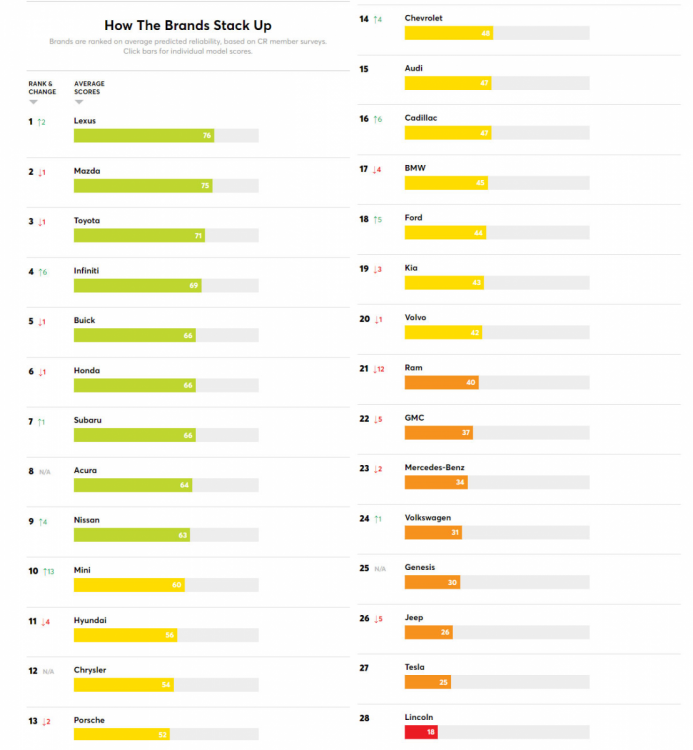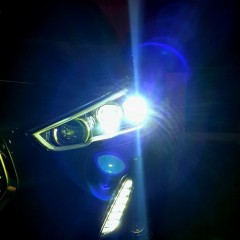Search the Community
Showing results for '"Prius"' in topics.
-
Got another variant that looks like Prius in front and purosangue behind https://m.sgcarmart.com/new_cars/overview.php?CarCode=21850
-
IMHO. This CVT is offspring of the Prius taxi in US. Should be reliable. My mileage was about 240k km. Also, I sort of recall that I came across on the internet of parts for this CVT.
-
TLDR: Powertrains: US carries over the 1.8l with 139hp now, 2.0l dynamic force with 169hp available like the hatch. US hybrid variant TBA, Europe/China gets the 1.8l hybrid found in the Prius, carries over the 132hp 1.6l with improvements. No word on the 2.0l higher output hybrid variant. USA gets 6spd rev-matching manual or dynamic force CVT with launch gear like the hatch . Chassis: Also TNGA like the hatch, shares same extended 2700m wheelbase as outgoing sedan and current wagon aka Touring in Europe. Tech: Apple Carplay and Amazon Alexa available, no word on Android Auto yet. Toyota Safety Sense 2.0. Some China variants get rear air-conditioning, TBA for other markets. Sport/Prestige: See videos below. China has both, EU Prestige only, TBA other markets. The Sport will likely be the base look in USA, with XSE taking a more aggressive look (see imgur link below). SG Predictions: Unclear whether SG will get Sport or Prestige. I'm guessing Prestige as we got the same sedan look as Europe last gen. We should likely get the current 1.6l or the improved EU one. Not sure if 1.2 turbo or 1.8/2.0 hybrid will appear here. Not sure also if Toyota will bring in the hatch or just the sedan. Given Thailand took a full year to launch the SEA market Camry, I expect PIs to bring the sedan before Borneo does, like the Camry (I learnt my lesson with my Camry post, so now I've titled it 2019/2020. Fingers crossed for the rear aircon too. More info: China Launch: https://newsroom.toyota.co.jp/en/toyota/25357603.html EU Press Release: https://newsroom.toyota.eu/new-sedan-joins-toyota-corolla-hybrid-family/ Sporty Video: Prestige Video (featuring rear aircon vents): Sport vs Prestige vs USA XSE: https://imgur.com/a/GOsx7zX Europe Lineup: China Levin/Sport Comparison: Interior Prestige: Sport:
-
2023 Toyota Prius – fifth gen set for Nov 16 debut https://paultan.org/2022/11/11/2023-toyota-prius-fifth-gen-set-for-nov-16-debut/
-
mine was lexus/toyota hybrid.... I will assume Toyota use the same tech and know how from their Prius to be applied to my car...😅 The point is if you have 2 systems in play, you have 2 systems' benefit and also reasonably expect 2 systems' maintenance and reliability issues. The reliability record is another matter altogether. I am just sharing my maybe anecdotal experience, may not apply to all models. Anyway, once bitten twice shy. 😅
-
Maybe you had the older tech. The previous gen Prius was very good. The taxi and PHV attest to its reliability and low cost of ownership.
-
Anyone got the defective part to sell? No need brand new in box. Old and worn out and taken out from your car also can. I just got a Fit GK 2019 for MIL as it was recommended by Top Gear as the car for old ladies. I forgot to add I pay Top Dollar. Anyone that sold a car to jamesc used car can tell you when I like a model and buy for my MIL I pay good money! The Prius owner from MCF that sold the unintended acceleration model will be happy to say he got a really good price from me!
-

Selling a 2017 Nissan Pulsar to buy a used 2016 Mini
kobayashiGT replied to Bubble_tae's topic in General Car Discussion
I think the verdict here is very clear. Get a Prius C lah.Save fuel, Toyota reliability. Parts is cheap. -
Consumer Reports’ New Annual Auto Reliability Data Reveals Safest Bets and Riskiest Choices Among New Vehicles Lexus achieves top spot among automakers in auto reliability brand ranking with Mazda, Toyota, close behind. Buick continues as the most reliable domestic brand--and the only one in top 10. https://www.consumerreports.org/media-room/press-releases/2021/11/consumer-reports-new-annual-auto-reliability-data-reveals-safest-bets-and-riskiest-choices-among-new-vehicles/ Release date 11/18/2021. YONKERS, NY — Eight of the top ten most reliable brands are from Asia, and only one--Buick--is a domestic, according to the latest Annual Auto Reliability data from Consumer Reports (CR), the nonprofit research, testing, and consumer advocacy organization. But there were some positive indicators for the domestics, too, as American models topped seven vehicle categories--an unusually strong showing. The 2021 Auto Reliability Report is based on data collected from CR members about their experiences with more than 300,000 vehicles in the annual surveys. The survey findings were announced at an online news conference before the Detroit-based Automotive Press Association today. Owners reported everything from transmissions needing replacement after as little as 5,000 miles to display screens that required hardware replacement and misaligned tailgates and doors. "With new-car prices at all-time highs and a shortage of vehicles on dealers’ lots, it’s more important than ever to consider reliability when you invest in something new,” said Jake Fisher, senior director of auto testing at Consumer Reports. “Buying a reliable vehicle can help ensure that you’ll be able to hit the road when you need to, and not worry about getting stuck waiting on parts for repairs.” Other highlights from CR’s influential annual report include the following: Despite their complexity, hybrids and plug-in vehicles are among the most reliable models. High-end electric-powered Sport Utility Vehicles are among the least reliable vehicles, but NOT because of their relatively simple powertrains. Complex electronics are their Achilles Heel, at least for now. Some Hyundai, Kia, Subaru, and Toyota models continue to have problems due to technologically advanced, and complex, transmissions. CR’s auto statisticians calculate reliability ratings for every major mainstream car, minivan, SUV, and truck on the market, even ones that are brand-new and redesigned for 2021. To do so, the team analyzes annual CR member surveys data on a model’s reliability history, calculating the brand’s overall reliability and, if applicable, the reliability of models that use some of the same components. Consumer Reports’ analysis of new-car reliability is a key element of CR’s Overall Score, which is a holistic measure of a vehicle’s quality designed to make it easy for consumers to quickly find the best cars, SUVs, and trucks to suit their needs. The Overall Score also includes road-test performance, owner satisfaction survey results, whether a vehicle comes with key active safety systems, and results from crash tests, if applicable. “The pandemic is creating a scramble for consumers as they face a reduced supply of new cars and significantly higher prices. That's why it's more important than ever that people get trusted help finding safe, secure, and reliable vehicles,” said Marta Tellado, President and CEO of Consumer Reports. “Our annual reliability reports, combined with our comprehensive auto testing, can empower consumers with the trusted information to make better purchases and navigate this unusually difficult marketplace.” Eight of the 10 Top Brands are from Asia Of the top ten most reliable automakers, eight are headquartered in Asia, with Lexus, Mazda, and Toyota in the top three spots respectively. Historically, Lexus and Toyota have regularly been at the top of CR’s brand rankings for reliability. That’s an especially noteworthy accomplishment for Toyota, which has a wide array of different nameplates in the survey--13 in all. Mazda, which was the top brand overall last year, falls to second place. Mazda’s above average overall performance was marred by the Mazda3 small car, which has average predicted reliability due to problems with its climate system and in-car electronics issues. Mazda has a conservative design approach with shared platforms and similar components, which helps it to produce reliable vehicles overall. Mazda has also stuck with its dependable six-speed automatic transmission while other automakers use more complex ones with eight or nine ratios or continuously variable transmissions, some of which have proven troublesome. All Lexus models score average or better for reliability in CR’s report. The Lexus GX SUV is the most reliable new vehicle overall this year; owners reported no problems for the three model years that CR analyzed in the brand rankings. The UX is Lexus' only average model. Third-ranking Toyota has only one model scoring below average, the Corolla Hatchback; CR’s members reported issues that required a transmission replacement or rebuild. The RAV4 remains average mostly because of problems filling the fuel tank on some versions. The Tacoma and the redesigned-for-2021 Sienna are both also average; the Sienna showed some power equipment problems. Both the RAV4 Prime and Venza, new for 2021, are well above average. Infiniti ranks fourth overall, an admirable improvement of six spots this year. The Q50 sedan remains impressive and the troublesome QX50 SUV improved to average. Buick is the most reliable domestic brand, coming in at fifth place overall. The Encore and redesigned Envision are both well-above average, and the Encore GX is above average. Surprisingly, the Enclave drops to below average, with transmission, drive system, and blank in-car electronics screen issues. High Rankings for Several Domestic Models Mark Signs of Improvement for U.S. Manufacturers Models from five domestic brands, Buick, Chevrolet, GMC, Chrysler, and Ford, take the top spots in seven categories--an unusually strong showing. They include: Buick Envision (Luxury Compact SUVs) Chevrolet Trailblazer (Subcompact SUVs) Chevrolet Silverado 2500HD and its twin the GMC Sierra 2500HD (Full-sized Pickups) Chrysler 300 (Midsized/Large Cars) Ford Bronco Sport (Compact SUVs) Ford Mustang Mach-E (Electric SUVs) Ford Ranger (Midsized Pickups) CR’s data also shows that hybrids and plug-in vehicles are among the most reliable models even though they have unusually complicated drivetrains. These vehicles include the Honda Insight, Kia Niro and the Toyota Prius, Prius Prime, RAV4 Prime, and Venza. One likely reason for their reliability is that most of these are well-established models that haven’t seen radical changes over the years. Even the new-for-2021 Venza uses a tried-and-true powertrain. The analysis also shows that fully-electric SUVs are among the least reliable vehicles. They include the Tesla Model X and Y, Audi E-Tron and Volkswagen ID.4. All have a high rate of problems in areas other than the electric powertrain. Some of these problems include climate controls, in-car electronics, and power equipment. Honda Ranks Sixth in Brand Rankings Honda ranks sixth among brands, down one from last year, with the Insight scoring well-above average. The CR-V, Accord, and Ridgeline score above average and the remaining models are all average. Both the Passport and Odyssey have improved, though owners still report issues with the infotainment system freezing and power equipment. Some Odyssey owners also report problems with the sliding doors. Subaru comes in seventh overall. The Crosstrek is well-above average, and the Legacy, Impreza, and Forester are above average. However, the Ascent still has subpar reliability. Acura's rank is eighth overall. The TLX has exhibited impressive reliability in its first year after a redesign, and the redesigned 2022 MDX has above average first-year reliability after below-average reliability with its previous generation. The RDX improves from below average to average, though it still has ongoing issues with brakes, power equipment, and in-car electronics with the display screen freezing and needing hardware replacement, and software updates failing. Nissan improves this year, moving up to ninth place--mostly because of older models including the Rogue Sport, Murano, and Leaf, which show impressive reliability. Mini rounds out the top 10, making it the highest-ranked European automaker this year. Mini only has two models in the survey, the Cooper Countryman and Cooper/Clubman, and jumps 13 places in the standing. The jump is mainly attributed to its Cooper Countryman's outstanding reliability. Hyundai falls four positions this year to rank eleventh. The redesigned Tucson is well-above average, and the Sonata and Palisade are also above average. The Kona Electric and freshened Santa Fe are below average, with, respectively, battery pack and electric drive motor problems, and transmission and power equipment issues. Kia drops three to 19th place this year, with transmissions being the brand's weak spot. The eight-speed dual clutch transmission that is used with the turbo engine in the redesigned Sorento is problematic. Owners of the Soul, Seltos, and Forte report a problem-prone CVT that could require replacement. The Niro Electric improved and the Telluride remains outstanding. Genesis’ reliability is suffering as the brand rapidly grows with new models. While the G70 has improved to average, the new GV80 SUV scores well-below average due to infotainment screen and drive system problems. Four Domestic Brands are Midpack Domestic brands are midpack or below--Chrysler at 12th, Chevrolet at 14, Cadillac at 16th, and Ford at 18th. Jeep, Tesla, and Lincoln took the three bottom ranks. Chrysler has just two vehicles in the survey--the 300, which has outstanding reliability, and the Pacifica minivan, which is well-below average due to issues including the transmission and sliding doors. Chevrolet models spread across almost the entire range of CR’s reliability scale--some excellent and some subpar. The new Trailblazer SUV and the Trax are both excellent. After years of respectable reliability, the Bolt EV dropped to below average, due to battery problems and electric drive failures, among other issues. The Silverado 2500HD and Blazer are above average. Others, including the Corvette and redesigned Tahoe, are well-below average. GMC's rank dropped because of similar problems as twin models from Chevrolet. The Sierra 1500, Yukon, and Canyon are all below- or well-below average. GMC’s only above-average vehicle was the Sierra 2500HD. Cadillac improved six spots this year, helped by the reliable XT5 SUV. The XT6 and XT4 are below- and well-below average, respectively. Ford is showing improvement this year, with the new Bronco Sport, Mustang Mach-E, and Ranger all at the top of their classes for reliability. But the redesigned F-150 scored below average, as did the Escape. Both the Mustang and the Explorer are well-below average. Ram drops the most in CR’s brand ranking this year, sliding twelve spots to 21st. While the Ram 2500 and 1500 are both average, the 1500 Classic (the previous generation 1500) has well-below average reliability marked by problems with brakes, emissions systems, engine, and power equipment. Jeep ranks 26 and among the bottom three brands. The company’s most reliable model last year, the Gladiator, fell below average. The Cherokee and Wrangler are both below average. The Wrangler has issues with the drive system, in-car electronics, and, like the similar Gladiator, with the steering and suspension. The Cherokee has in-car electronics and some transmission issues. Tesla, with four models in the survey, is unchanged at second from last. While Tesla’s Model 3 has average reliability, the Model Y still has body hardware issues with the tailgate and door alignment, paint defects, and multiple other problems. The Model X and Model S both have body hardware, climate system, and in-car electronics problems. All Lincoln models have below-average reliability, with the Corsair and Aviator being well-below average. They, along with the Nautilus, have transmission, in-car electronics and power equipment problems. Mixed Bag for European Models Porsche ranks midpack at 13, down two from last year. The Cayenne and Macan have average and above-average reliability. Audi is unchanged at 15th. The A4 and A5 remain above average, and are joined by the A6 and Q5. The Q7 is average, but the Q3 has below-average reliability. The Q8 and E-Tron, both well-below average, continue to have drive system and power equipment issues. BMW is in 17th, down four. The X5, 3 Series, 5 Series, and X3 all have average reliability, but the redesigned 4 Series has subpar reliability due to power equipment problems. Volvo is 20th overall, down one. The XC90 continues to score well-below average, mostly due to issues with brakes, climate system, and body hardware. The S60 dropped to below average this year also because of multiple issues. The XC40 is average and the XC60 is now above average. Mercedes-Benz is in 23rd, down two from last year. The only reliable model is the GLC. The E-Class fell to below average and the GLE remains well-below average, with numerous power equipment, climate system, in-car electronics, and some engine problems. Volkswagen is at 24th overall, up 1 from last year. While the Atlas and Jetta improved to average reliability, the Tiguan and the new ID.4 EV are both subpar. For more information on CR’s 2021 #CRCarReliability findings, visit CR.org/reliability or follow us on Facebook, Twitter and Instagram @consumereports. About Consumer Reports Annual Auto Reliability Surveys The latest Consumer Reports Annual Auto Reliability Surveys, gathered information from the organization's members on more than 300,000 vehicles from model years 2000 to 2021. Members filled out online surveys in the spring and summer of 2021. CR’s reliability predictions are based on overall reliability for the past three model years, provided the vehicle has not been redesigned. One or two years of data will be used if the model was redesigned in 2021 or 2020. CR bases its reliability analysis on data gathered from CR members each year about problems they had with their vehicles in the past 12 months. CR’s team of statisticians and survey researchers, then analyzed trouble areas and created an overall reliability score for each model and year. Serious problem areas that can lead to expensive repairs are more heavily weighted. More information can be found at www.CR.org.
- 28 replies
-
- 3
-

-
- consumer reports
- car reliability
-
(and 1 more)
Tagged with:
-
Toyota revived its Prius but in terms of material quality, even in full spec, it is disappointing. The interior rear door panels upper portion are hard plastics. And Prius being a class above Corolla Altis (which has more soft touches interior around), Toyota really doesn't give justice to the Prius. The previous model had better all round interior soft touch plastic than the new Prius. The recently facelifted Altis has a much more pleasing interior yet selling at nearly $50k less than the soon-to-launch Prius which is set to be at around $200k. I too dropped by BM to view the Prius and felt other than just the good looks, the rest, especially the interior just not worth the money. There are other models within the Toyota umbrella offering better deals. The Prius just felt cheap really with the mostly hard plastic interior, 7-inch infotainment screen and steel rims with wheel cover. I won't be surprise it will be hard to sell for BM. Prius really is like spending so much more for less.
-
This is simple, beautiful and practical. 2022 Toyota Aqua revealed with hybrid powertrain, bidirectional charging After 10 years on the market, during which 1.87 million units have been sold, the Toyota Aqua is transitioning to the second generation. It exited the North American market where it was known as the Prius C a few years ago, but it continues in its domestic market Japan with a fresh look, a different platform, and some clever features. Featuring a far more modern design than its predecessor, the 2022 Aqua has been fitted with a one-pedal operation mode as regenerative braking kicks in the moment the driver eases the pressure on the accelerator pedal. Offered as standard with front-wheel drive, the small electrified hatchback can be ordered with an E-Four system for better traction courtesy of AWD. Toyota claims it’s the first automaker to install a high-output bipolar nickel-hydrogen in a road-going hybrid. Compared to the battery pack used by the first-gen Aqua, the new cells offer better, smoother acceleration at low speeds while featuring double the output over the original model’s pack. At the same time, the hatchback can travel at higher speeds than before when the internal combustion engine is turned off. Interestingly, the vehicle comes equipped as standard with support for bidirectional charging courtesy of a power outlet (1,500W / AC100 V) which incorporates an emergency power supply mode. This will come in handy in a blackout as the energy stored in the car’s batteries can be used to power various household appliances. Riding on the TNGA-B platform, the 2022 Aqua has a 50-mm longer wheelbase than before and boasts a large 10.5-inch touchscreen for the infotainment system. The driver’s seat rotates and there are plenty of storage spaces throughout the cabin, giving the hatchback impressive practicality for such a small car. The greater distance between the axles has generated additional legroom for rear passengers along with a more spacious cargo area.
- 27 replies
-
- 12
-

-
https://www.caranddriver.com/toyota/prius The 2023/2024 engine spec DOHC 16-valve 2.0-liter Atkinson-cycle inline-4, 150 hp, 139 lb-ft + 2 AC motors (combined output: 194 hp; 0.9-kWh lithium-ion battery pack) Transmission: continuously variable automatic https://www.caranddriver.com/toyota/prius-2022 2022 engine spec DOHC 16-valve Atkinson-cycle 1.8-liter inline-4, 96 hp, 105 lb-ft; front: permanent-magnet synchronous AC motor, 71 hp, 120 lb-ft; rear: induction AC motor, 7 hp, 40 lb-ft; combined output, 121 hp; 1.3-kWh nickel-metal-hydride battery pack For the 2024 spec One powertrain commands the Toyota Prius lineup. This is a 194-hp hybrid setup that uses a 2.0-liter hybrid inline-four gasoline engine borrowed from the Corolla Cross hybrid crossover and bolted to a continuously variable automatic transmission. Front-wheel drive is standard. For all-wheel-drive Priuses, Toyota adds a high-output permanent magnet electric motor to the rear axle, bumping total powertrain output to 196 horsepower. The launch to 60 mph, which took last year's Prius an exhausting 10.5 seconds to reach, now takes just 7.1 seconds according to our testing of a front-drive Limited model. That's quicker than both the Camry Hybrid and Elantra Hybrid. I think only US model has a higher output rear electric motor? Dunno leh. But it seems like the 2.0L has 2 AC motors while the old 1.8L has one. Battery pack is also updated to Li-ion from NiMH.
-
Happen to catch Toyota's roadshow at Vivocity this week and the more I look and feel the new Prius, the more I felt this new model feels cheap with the hard plastic interior and our locally fitted hideous looking head unit. Overseas getting integrated unit, look at ours (the gap between the screen and the bezel). Previous Prius didn't look as good as this new one but it impressed me with good quality material just like the Altis. This new one the door closing sound sounds hollow too... And yeah it just has good looks, other than that, it's all a step back.
-
yeah. Of course if u talk about what is robust, the most simple NA engine is the best. But lexus is still the most popular brand in the States for long term customer satisfaction. U pay a premium for a preowned lexus there, compared to any other band. I talked to Ioniq taxi drivers, they say nowhere comparable reliability to Prius. That's why usually u pay more for rental for Prius. less downtime. When my friend went to UK for HMDP, he says the UK private hire drivers also prefer toyota hybrids. And this was a time when diesel engines are a real alternative.
-
Plenty of PI Noah and Prius running around. The vezel has Xmas lights and check engine pretty often, not exactly sure why. Have PI toyota wish and Borneo ones are identical save for some specs difference. Why should the jdm version be so vastly different for the export model. Maybe those more highly tuned engines yes, but for bread and butter cars with run on regular Japanese fuel, they also run well here.
-
Although noise is not a big selling point, but I am one of those that appreciate quietness of a car. The Toyota Prius hybrid was already very quite to me, and EVs are as quiet or even quieter. I had a Singpost EV bike rode passed me the other day without even me noticing. And then a 10 wheeler EV truck was parked along the long side uploading stuffs, I walked passed it without knowing its motors were running.
-
IMHO. AFAIK. FWD = 1 motor. AWD = 2 motor. AWD or FWD, there is actually one more motor, but is more like a generator. This is the 5th Gen Hybrid. 4th Gen or earlier, not sure how it works. But the 5th Gen uses more powerful motor, which is why the acceleration is quicker. The 5G 2.0L Prius will be about 1-2 car length faster than the 5G 2.0L Corolla Cross Hybrid. If the 5G 2.0L Prius uses the same Li-Ion battery as the 5G 2.0L Corolla Cross Hybrid, it will be about 0.9 kWh. 🤣 Assuming 1kWh gives 4 miles, minus off the 25% upper and lower tolerance, EV mode will give about 1.8 miles ( about 2.9 km ) 🤣
-
IMHO. Japan Prius have hybrid and plug-in Hybrid. Plug-in Hybrid is 2.0L and Hybrid is 2.0L using the same engine M20A-FXS. There is also a 1.8L Hybrid using 2ZR-FXE. Japan Corolla Cross have Hybrid and non-Hybrid. Hybrid is 1.8L engine same as Prius. Non-Hybrid uses M20A-FXS. Singapore AD Corolla Cross is Hybrid. 2L using M20A-FXS using Lithium. This is 5th Generation Hybrid. Malaysia Corolla Cross have Hybrid and non-Hybrid. Both 1.8L engine. Hybrid uses NiMH. Thailand Corolla Cross are Hybrid 1.8L engine using NiMH.
-
There are 3 variants of 5G Prius. Prius PHEV (2L), 2L and 1.8L. Other than PHEV, the rest has either 1 or 2 motors. PHEV uses 1 front motor. 1.8L uses ole 2ZR engine. 2L uses Dynamic Force Engine Front Motor: PHEV > 2L > 1.8L Rear motor: 2L = 1.8L
-
Seems like the 5G Prius is a popular choice of hire car for Singaporeans in Japan, myself included. So here's my contribution. I had the car for a week, a G Grade 2.0 FWD with the M20A-FXS Dynamic Force engine and latest hybrid system. I would never have imagined myself having this much fun in a Prius, but I did. The 2.0 engine has loads of torque to induce wheelspin when pulling away from the (dry) ETC toll-gate, but that's probably due to the skinny 195/50R19 tyres. Styling wise, you can see how low slung it is compared to the sporty GR Yaris. The interior is a pleasant place to be in with a leather-rimmed steering wheel, comfy seats and ambient lighting livening up the otherwise dark interior theme. It had a 8 inch touchscreen with carplay and all the modern connected services that can be accessed via an app. One criticism will be that the instrument cluster is blocked by the top of the steering wheel rim, which is otherwise clear and informative. The boot is very shallow; it did swallow our 2x 28in luggages and a cabin roller but not without the edges of the luggage wedged against the lift gate glass. Will be interesting how it fares as a taxi here in Singapore in this case. Final thoughts; it's a bit of a bummer that Borneo is selling what I believe to be the base spec with the previous gen 1.8 2ZR engine, although not surprising given our taxing approach to car ownership in Singapore (pun intended). I suspect one may be better off getting the Corolla Cross Hybrid which comes with the same 2.0 drivetrain, albeit in a less sexy but more practical body.
-

An Early Look at the 2023 Toyota Prius Prime XSE Premium
kobayashiGT posted a topic in Japanese Talk
Source: https://hypebeast.com/2023/4/toyota-prius-prime-xse-2023-early-look Toyota has just revealed its latest Prius Prime model for 2023 and, with its clear restyling and hybrid performance improvements from the previous generation, it could be the new choice for the discerning car consumer in a “sea of electricity.” The all-new Prius – which was announced earlier this year – arrived with fanfare around its substantially new design, and the Prime maximizes itself in the looks department. To summarize, the Prius Prime is sleek, with a radically raked front windshield that’s more “sports coupe” than “efficient city car.” A sloping rear roof that drops off suddenly at the hatch lip gives an almost boxy-yet-futuristic angle to the rear, while a flat rear bumper complements the front’s near-90º angled fascia. Speaking of the rear, the Prime is actually wider than the previous generation, which is a bold move from Toyota since a wider stance would actually harm efficiency. More on that and these decisions later. The Prime XSE Premium is also equipped with 19” machine-finished wheels that sit two inches lower than the previous generation. This stance and the large wheels give the appearance of aggression and again goes against the grain of efficiency, yet works well with the Prius Prime’s appeal. Sharp angular LED headlights, a low and pronounced front air dam, rear LED light bar and rear door handles at the C-pillar are other visual choices that make the new Prius Prime stand out. Inside, the cabin feels more refined and evolutionary, with driver-passenger enhancements to touch points and visuals being the main takeaway. Dashes of red – at the dashboard, shifter and even on the seats – adorned our test car’s interior that gave the rather-boring black upholstery a much needed pop. We also liked the dual digital screens, acting as the gauge cluster and infotainment center. Bonus points for all the climate controls being accessible through knobs and buttons rather than within menus, and for the volume knob too although it was a bit far for the driver to reach. The most surprising element within the cabin was the steering wheel, which felt small in hand, giving the impression that whoever designed it had handling and dare-we-say “sportiness” in mind. Performance-wise, the Prius isn’t a sports car, but has shown improvement over the last gen. Inside are two motors: a 2.0L gas-powered engine good for 150 horsepower, and a 161 hp electric motor working in conjunction. The net total of both comes to 220 hp and 139 lb-ft of torque that allows the Prius Prime to accelerate from 0-60 in 6.6 seconds – the previous Prius was up in the sevens. While not sports car territory, acceleration in six seconds is competitive against the Audi A3 e-tron Sportback at 6.5s, the BMW i3 at 6.6s and even the turbo-four cylinder Mercedes-Benz GLA 250 at 6.5s. Overall the car felt zippy when it needed to be and the power should be more than enough for most people, but certainly not for the enthusiasts. So why did Toyota create a new Prius with big wheels, a wider body and a lower stance, all of which go against the ideals of maximum efficiency? For once, the hybrid Prius is a contender against the “new norm” of electric cars you see on the road. The Prius’s design alone adds a new layer for consumers in search of a car that looks great and drives well, even if it sacrifices a bit of efficiency. Back in the early 2000s, most can remember looking at the Prius and scorning it for being bland and boring; for Toyota to flip that script and now be considered an alternative to a new defacto is invariably a bold statement, and that’s what makes the new Prius different, daring, and possibly even “cool.” The Toyota Prius Prime XSE Premium starts at $39,170 USD and begins shipping in May. If you’re looking for something from Toyota that’s no compromises, the GR Corolla is the latest in the sporty offerings department. -
Dropped by Borneo Motors Leng Kee just now to see their Prius. However the one they had in their showroom looked like the poverty-spec car, with steel wheels, manually adjusted seats and no electric boot. Plus, it only comes in 1.8 litre format - so it is in Cat B but does not come with the benefit of power. Rear headroom is terrible - I'm not a particularly tall fellow and my hair is rubbing the head liner... and they're starting to be used as taxis... hmm. I'm told that the Corolla Cross Hybrid is only slightly more costly but comes with all of the features above, including the 2 litre engine. The styling of the new Prius is very nice, but its not so nice that I can overlook its shortcomings if I were to be in the market for a car.
-
Yup. Prius Prime. Rav 4 Prime. Think they can't build enough.
-
Maybe the big cc gs450h is more complex. But excellent reliability from the 1.8 hybrids. Talk to any Prius Noah PHV. Easily 500-600k km. Only persistent problem is the ABS pump and master cylinder which fails around 300k km
-
Hey guys, been a long time since I've been active here, but you know what? I've been brewing a car taxation plan in the back of my mind for months, just never sat down to write it out. We all know the legendary COE and many of us by now have already said it needs a do-over, even the polimakers are starting to say something about giving it a do-over. But always without reconsidering what classifying cars should be. Since I'm never gonna get into the "job" of public service, here's my comprehensive... uh... suggestion? You wanna tl;dr? Fine, I'll leave one at the end. Total COE Restructure Let's start with the headliner, which is always our iconic certificates (we know our car don't last forever, because of COE). Since its inception, the COE has, for consumers, been fundamentally separated into categories A and B, which for now I will focus on. As a reminder; Category A represents passenger vehicles up to 1,600cc or 130hp (97kW), and Category B is just... anything over that, making the assumption that B category vehicles are inherently larger or more luxurious vehicles. Now, the main proclaimed goal of COE is managing the vehicle population, and ostensibly managing road congestion by limiting the volume of cars. With that stated intent in mind, who agrees that a car's power output and displacement has any real bearing on its ability to create congestion? Would ten buses cause more congestion than ten Golf Rs in the same stretch of road? Would ten Cat B Golf Rs cause more congestion than ten Cat A Golf (....what's it called now? 90TSI? Scrap that too) Ten buses would definitely block more road than ten Golfs, EA888 or not, but of course the counterpoint is that ten buses holds many times more people than ten Golfs, or even the equivalent number of Golfs in terms of length. Redefining the Categories... on Size. So my suggestion is, actually, quite simple - let's redefine COE categories based on the physical size of vehicles. This is easily accessible information, I cannot think of any car that you cannot get dimension information for, and if you really can't, there's nothing stopping the homologation department from breaking out a tape measure. I don't think I want to arbitrarily define numbers I think are suitable for separating Category A and B at the moment, but... If we consider trends, I'd say a comfortable position for Category A is 4,700mm long and below, as most "compact" sedans today remain in the ~4,650mm long range, and plenty of small hatchbacks are well low that. (Isn't it ridiculous that a 2020 G20 3-series now is longer than the 1994 Mazda Capella/626?) Anyway, keeping things simple would be using length, because that is usually what really determines how much space a car needs on a road. I consider 4.65m a median of sorts, 4.7~5m the range locals traditionally consider a large family car, and that anything over 5m, nobody is going to call that small. Cars under 4.4m are typically the 'small' ones today, you'd be hard pressed to still find something under 4m. Again, keeping it simple, if we were to retain a binary classification, Category A could be below 4.7m and Category B anything longer than that. Alternatively, we can expand it a little to include overall footprint, by taking length x width of the car, but given that lanes are lanes and people aren't supposed to be driving across two lanes, it occurred to me while writing this that that's really a little unnecessary, plus it makes it a tad harder to account for capacities. Long story short though, is let's just redefine COE categories based on size/length of a car, not its engine power/displacement, which no longer has any real direct bearing on its state of luxury, economy, efficiency, or, most importantly, physical size. COE Incentive for Family Vehicles With Singapore's infamously small land area, there's a consistent push for car sharing, reducing the number of individual vehicles, increasing the person per vehicle, and so on, but there's also a consistent and very unhappy demographic of families that for practical purposes need a vehicle on demand for themselves to manage their children. Yes, you can bring your kids on a bus, but with a stroller and all the like, managing a potentially rambunctious or easily upset child whilst carrying a baby or other nightmare scenarios, you can imagine all of that, and there are plenty of little articles about why families scrounge everything they can to afford a car even with the wide availability of ride hailing and our celebrated public transport. (Simply don't Go aside) By their nature, a sportscar, two seaters especially, have less capacity for transporting and are traditionally the domain of luxury, and rarely sit in the lower price classes. But at the same time, a tiny convertible like a Daihatsu Copen may be really just a recreational vehicle for two, but it takes up virtually no road at all compared to a Toyota Fortuner. With this in mind, I'd propose that any vehicle with less than five seats incur a COE multiplier - it should cost more to own a vehicle of this type, but it should still be in accordance with its size. As such, a 7-seater, which has the capacity to hold more people, and is often a choice made to accommodate a growing family, should be incentivized - it should have a COE reduction. Of course, it's always going to be true that cars spend a lot of time with less than their entire capacity filled, but there's really not a whole lot we can do to mitigate that. But the fact is that placing a Polo GTI in the same taxation category as a Nissan X-Trail, or a bus-lane demanding Aventador, is antithetical to the system's intent. Many of the times a family that really could do with a vehicle are the ones who are suffering the most from sky high COEs, whereas we know by now those who can afford their fifth Porsche don't really care too much about an extra $20k. Short version: COE classification based on size of the car COE Penalty for impractical sports vehicles with less usable seats COE benefit for practical family vehicles with more usable seats But hold on, why again do we need to fuss so much? The COE system has been unfairly cruel to the folks who can arguably need vehicles the most, and at real worst an annoyance to rental/fleet companies and affluent individuals with the means to own multiple cars. There needs to be a real restructuring to allow more cars to be used by these young families who struggle in many ways because they see cars as a necessity even with all their 'alternatives', while taking more from those who are ordering their third Cayman. Size is the thing that implicates congestion potential the most, and instead encouraging a population of many small cars, two Jazzes can hold five people (even if in relative discomfort) each compared to four in a standard S-class, while taking up only marginally more effective space on the road. A Prius makes barely over 130hp and gets shoved into Cat B, but who's gonna say a Prius is appreciably more luxury than a Corolla Altis? Power and displacement has long been detached from a car's class, but physically larger cars often really do be more inefficient and luxurious - compare, say, again, an Audi A1 to an Audi A6. You can have both with the 1.4TFSI engine, but the A4 is noticeably better built on the inside. Even accounting for the tune increase, the Cat B A4 1.4 is much less efficient because it weighs more. Then you have the obviously ridiculous Mercedes Benz MFA180 spec, (A180, B180, CLA180, etc.), which previously came with the M270 "RED" engine, RED standing for reduced - that brought the 1.6L engine from MFA200 specs of around 155hp to the Category A 130hp to allow the premium brand to sell Category A vehicles here. The thing that's widely ignored is that the Cat A "RED" engine is not only less powerful, but less efficient, both in the claimed numbers and in real use. A more recent example is the 2023 Honda Civic Turbo's local exclusive Cat A 129hp tune, a substantial reduction from the engine's normal 180hp variant, without being appreciably more efficient, and even before that KM is one of just 8 territories where the ancient 1.6L engine was recycled one more time for the 2017 Civic tenth gen. Many hybrids produce over 130hp but are more efficient, but automatically get discouraged by Cat B. I'll reiterate this point, but to summarise this section; The current COE structure is outdated, nonsensical even at its inception and does not keep cars affordable for lower income families who need them to better manage their children in their busy lives, an increasingly vocal demographic that we weigh all our hopes on. Managing one kid and one stroller on Bus MRT Walk is tough enough, but our population won't grow when it's so hard to care for your children. Plus, the absurd choice of metrics of power output and displacement to classify vehicles discourages innovation in powerplants that we seriously need for reducing the gasoline footprint, resulting in a larger population of cars with outdated engines. The World's Most Expensive Cars... with the lowest specifications We already know we have the most expensive cars in the world, but have you noticed we have the lowest specced cars in the world too? Why? ARF. The ARF taxation is why you pay for your car's value, at minimum, twice over - a car's ARF, before "incentives", is 100% of a vehicle's OMV, and gets worse from there. As such, higher spec vehicles incurring higher OMV incur higher ARF. This of course makes sense from the standpoint of taxing luxury, but it also means that dealers, with their immense margins, are not willing to bring in vehicles that are well equipped. Consider Citroën under C&C, which has for whatever reason decided that the storied French nameplate should be a lower cost brand. Their latest lineups have been exclusively brought in with pretty barebone specifications, lacking even electric seat options. "Premium" Automobiles has been perhaps the most depressing offender to me personally, with their hypocritical name - their cars routinely lack any manner of technology that befits Audi's slogan, just a few of the most obviously visible ones for "wow" factor - Virtual Cockpit for example was hyped early on. Due to the expensive taxation via ARF, batch homologation and lack of flexibility in bringing in cars of individually customized equipment levels, the dealers are largely discouraged from importing vehicles with full equipment lists - as someone who personally wants a car with all the trimmings, this has been a long running frustration of mine. Audi's presense active safety/assistance suite is available on...... I don't know, which? Only the A8? The Q8 doesn't even have the sunglasses compartment and lined interior visors, for crying out loud. You can get all of those on... a Skoda Octavia. For far less. Why do I care so much about these features? Because many of these are safety technologies that are being exorcised from premium cars, safety technologies I was one of the earliest to adopt. I've a 2015 model year vehicle featuring adaptive cruise, blind spot warnings and lane keeping assist, four years before these features have reached Singapore's mainstream. And you still struggle to get these as standard on an Audi, a BMW, or a Mercedes. Even though they're widely available from mainstream brands now (Peugeot, Toyota SafetySense, Honda Sensing, Subaru Eyesight, Mazda has it too, so on), the premium marques don't offer adaptive cruise or their full safety suites, at best a cut down variant. PML BMWs have begun to have Driving Assistant across all cars, but this is limited to camera based front active city braking, blind spot warning and lane keeping, you are still denied RADAR based active cruise. And the PA imported Audi S3 in 2019 did not come with a reverse camera. I want an upgrade, not a downgrade. There needs to be more emphasis on safety technologies and not "wow" technologies, and dealers need to start offering smaller vehicles with premium equipment lists. What's a solution? Obviously this problem also lies with dealers and consumer mindsets, the desires always to cut corners on our already expensive cars, and I think it's fine that we should have to pay more for options like Virtual Cockpit, or Alcantara trim. But I think we need to stop compromising on safety technology. This is to me, non-negotiable at this point. In other countries across the world, many marques have begun offering these features as standard. Hold on, you might say, why does it matter so much? I don't need this stuff, I drive fine. So in the eight years I've been driving my beloved Mondeo, I've used Adaptive Cruise nearly every journey... But I've had the emergency brake intervention trigger only twice. I was sleepy. You will never be driving in 100% perfect condition every day of your life. We already say we've got some of the worst drivers, the most kiasu, the most impolite, and my Mondeo isn't shy about warning me that I'm less than two seconds of following distance to the car in front (I have sensitivity on high for pedestrian detection), but what's to say we can't reduce the number of accidents with these features? Side anecdote, I'm still baffled by how seven cars can have a chain collision in the middle of the highway, an empty highway during Circuit Breaker, in broad, clear daylight. What kind of absurd scenario causes that? Yes, it'll make the cars more expensive, as these aren't without a cost, but can you imagine how much less we'd lose in time and money if we had virtually zero accidents across our roads? Less congestion, less time wasted, less fuel burnt in traffic jams, no need to waste TP resources dispatching to manage the scene, less money spent on EMAS recovery. Less money lost on people idling in a jam. So I propose that there be a discount incentive for safety technology equipment on cars. Say, a $500 incentive for forward collision detection. $500 off for Blind Spot warning. $250 off for adaptive headlights. $250 off for seatbelt airbags (my Mondeo didn't come with them, sadly) Something like that. I also think, really, we should consider making it possible to fine someone extra if they were involved in an accident while driving with that feature disabled (if equipped, obviously), or at least if I were an insurance officer I would probably increase the person's excess for that incident. The legislation has long been discouraging advanced technologies and our cars have been routinely some of the worst equipped in the world, while the COE system somehow results in some of the most inefficient powerplants reaching us. You might have noticed I didn't specify a discount on ARF, which has long been the typical means of providing incentives, notably through the EV early adopters incentive and the CEVS rebate. That's because anyone who knows ARF knows that ARF is what determines your PARF rebate, more commonly known as scrap value. The PARF rebate depreciates linearly from 100% ARF to 50% over the ten years of the car's original COE, which means that every $1,000 discount on ARF is really a $500 loss to your PARF rebate. Which is why cars, particularly EVs, that have high CEVS rebates, have spectacularly poor depreciation rates. (See, for example, SGCM's BMW iX3 vs X3 faceoff) Incentives need to be serious, and to be really serious about being an incentive they need to not take from the consumer's back pocket. I also suggest we start incentivizing real hybrids, and plug-in hybrids. In a meaningful way. Tons of dealers have started offering mild hybrids, which just include a small booster battery that helps start from a standstill. These do not confer any real efficiency benefit overall. Plug-in Hybrids are expensive now, but deserve to have more penetration. I asked many a dealer, why are you not offering PHEVs? The answer? Nobody wants them. My response; nobody I've asked knows they exist. Dear dealers, you make the markets, not the consumers, in Singapore. Do us better. I suddenly got really sleepy at this point, so I'll maybe elaborate in another post. All the essential info's above. But what else do I think I want to throw in? The diesel duty raise. That was dumb - commercial vehicles are the most frequent user of diesel, and increasing their cost to run has undoubtedly lead to delivery and freight costs rising and reaching the consumer. Rental companies propping up COEs with their indifference to high COE prices? Supposedly doesn't happen, but I doubt that. Almost definitely has to be happening, and then those cheap grade low spec cars get dumped on the preowned market exacerbating the problems I described. Not to mention that expensive COEs lead to more use of rental vehicles, which the rental companies can price up to recover their costs...? Makes for a self-sustaining cycle. Anyway, as promised, tl;dr; COE current system of displacement/power is dumb (and was dumb in 1990), change classification system to be based on length. Discount COE for more than 5 seats, penalty for less than 5 seats Revise ARF/add incentives for safety technology to encourage safer cars Revise incentives to encourage more efficient gasoline cars, not just EVs, because EVs are still not ready
- 42 replies
-
- 3
-

-
- coe
- car markets
-
(and 1 more)
Tagged with:


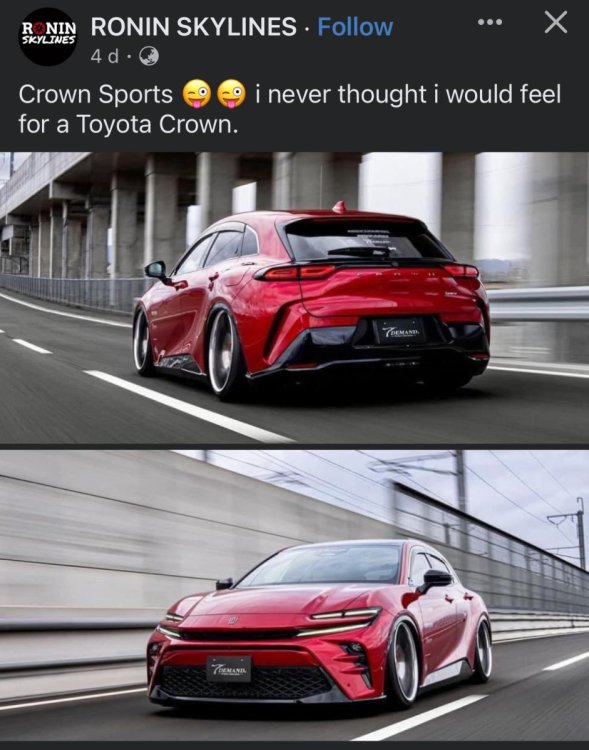

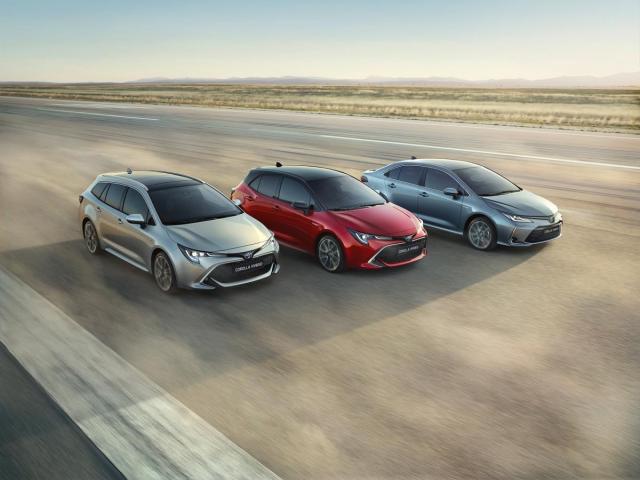
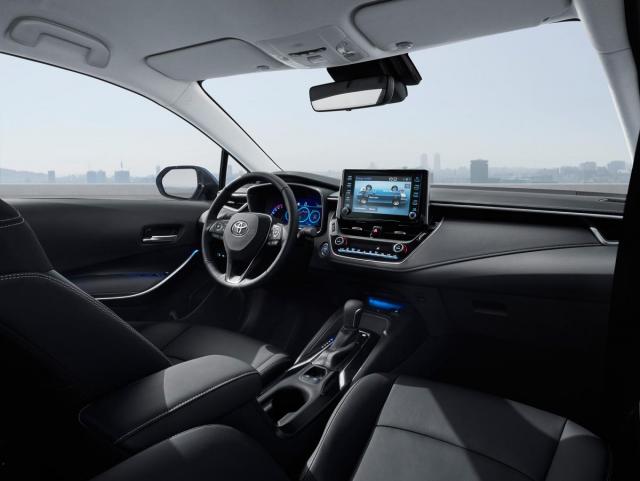

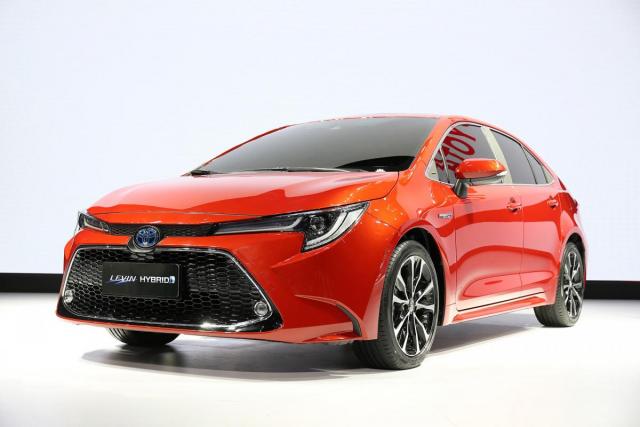
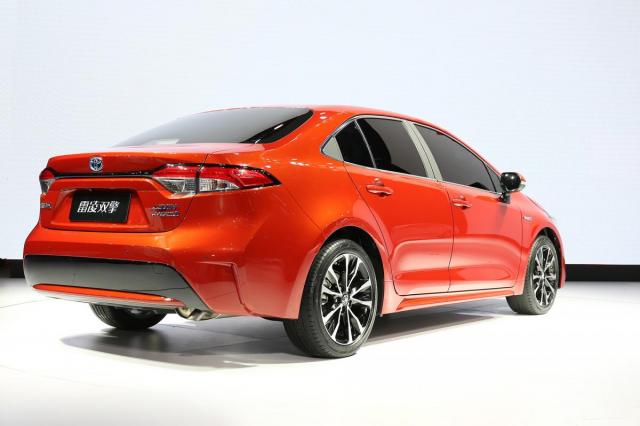
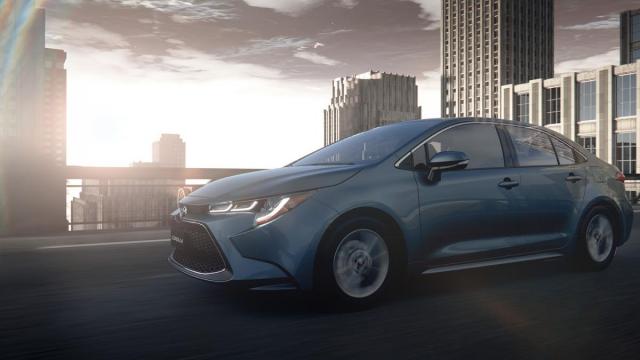
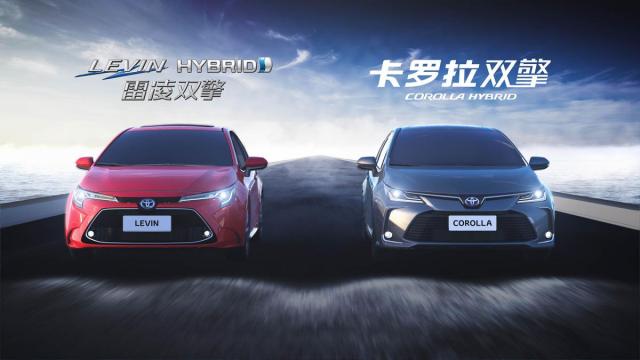
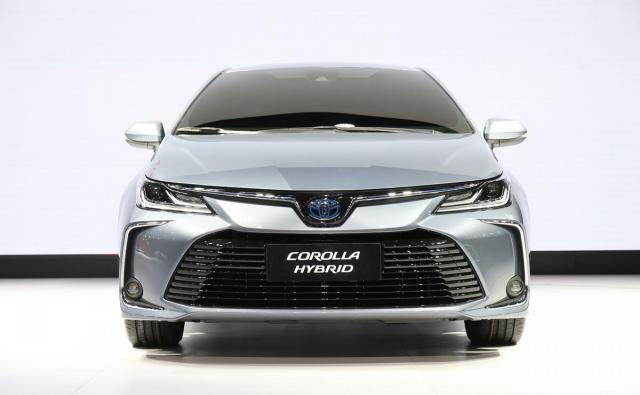
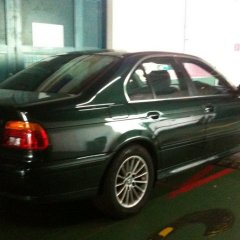

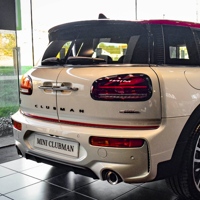


.png)

